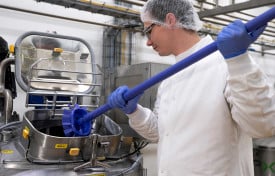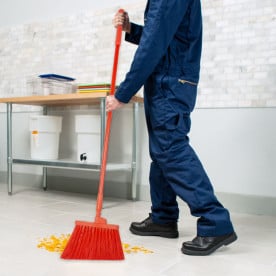Production & Material Handling

- September 24, 2014
Detection of contaminants is a critical aspect of ensuring food safety, especially with stringent government regulations. The use of metal detectors is increasingly vital to identify and reject harmful objects, contributing to enhanced Hazard Analysis and Critical Control Points (HACCP) and Good Manufacturing Practices (GMP) programs. This comprehensive approach extends to a wide range of metal-detectable products, from safety supplies to processing tools, ensuring the integrity of food products. The smallest detectable foreign object varies based on factors like material, line speed, and moisture content, with the detector head's height being crucial. Calibration is a key process, involving setting thresholds based on contaminant size and collaborating with the metal detector manufacturer. Regular testing of calibration is essential to prevent larger contaminants from bypassing the detector and compromising product safety. Metal-detectable products, often colored blue for easy visual detection,
- April 02, 2014
Now is the time to do annual maintenance on your insect electrocutor units. Late winter is the perfect time to check your insect units to make sure they are working properly, and to do an annual bulb change.
Here are two common questions to remember before spring insect hatchings happen:
My lamps are lit, why do I need to change them?
A lamp that is still lit may not be doing the job you need it to. Black light (UV) lamps are most effective when new. They lose their ability to attract insects long before they actually burn out. UV light is invisible and while the lamps remain lit the UV producing phosphor only has an effective life of 7000 hours or about 9 months.When should I change my bulbs?
It is essential to replace lamps at least annually. Most users choose to change their lamps in the spring, which is the beginning of the insect season. Each lamp comes standard with a year/date label for audit compliance, but also to - April 17, 2013
When you hear about pest control in the food industry, one of the most common forms you hear about are insects. Depending on your geographic location, insects can be a problem year round, or rather be an extreme issue in the Spring of the year when the climate is prone to producing the proper temperatures for population growth and potential infestation.
In a recent Food Quality article, Jim Fredericks, PhD does a great job at addressing some of the pests that aren't as commonly acknowledged. Touching base on pests from cockroaches to stored product pests, Dr. Fredericks discusses the issues associated with these organisms, as well as, ways to detect and control their population.
- November 26, 2012
Do you know that for the fourth quarter of 2011 allergens exceeded microbiological causes for recalls? If you Google "FDA Allergen Recalls" you might be amazed at all the recalls by the FDA just within the last few months. They ranged from undeclared milk and soy in jams and jellies to sea salt that possibly contained milk residue - the list goes on and on. It is important for food plants to ensure that each and every time they go from one production run to another that the food contact surfaces are allergen-free.
Food production facilities must ensure that their ingredient suppliers are also declaring specific allergens in their products and testing for them. Certificates of analysis for each lot must identify
- July 26, 2011
Here's a sneak peek of our exhibit at the International Association for Food Protection (IAFP) Annual Meeting, at the Frontier Airlines Center in Milwaukee, Wisconsin, next week, July 31-August 2.
Our booth 621 will feature:
- Our new website, we will have a laptop right in the booth, stop by and check it out!
- Color-coded products, many new items are now available in purple.
- Sanitation & environmental testing supplies, see our allergen test kits &







